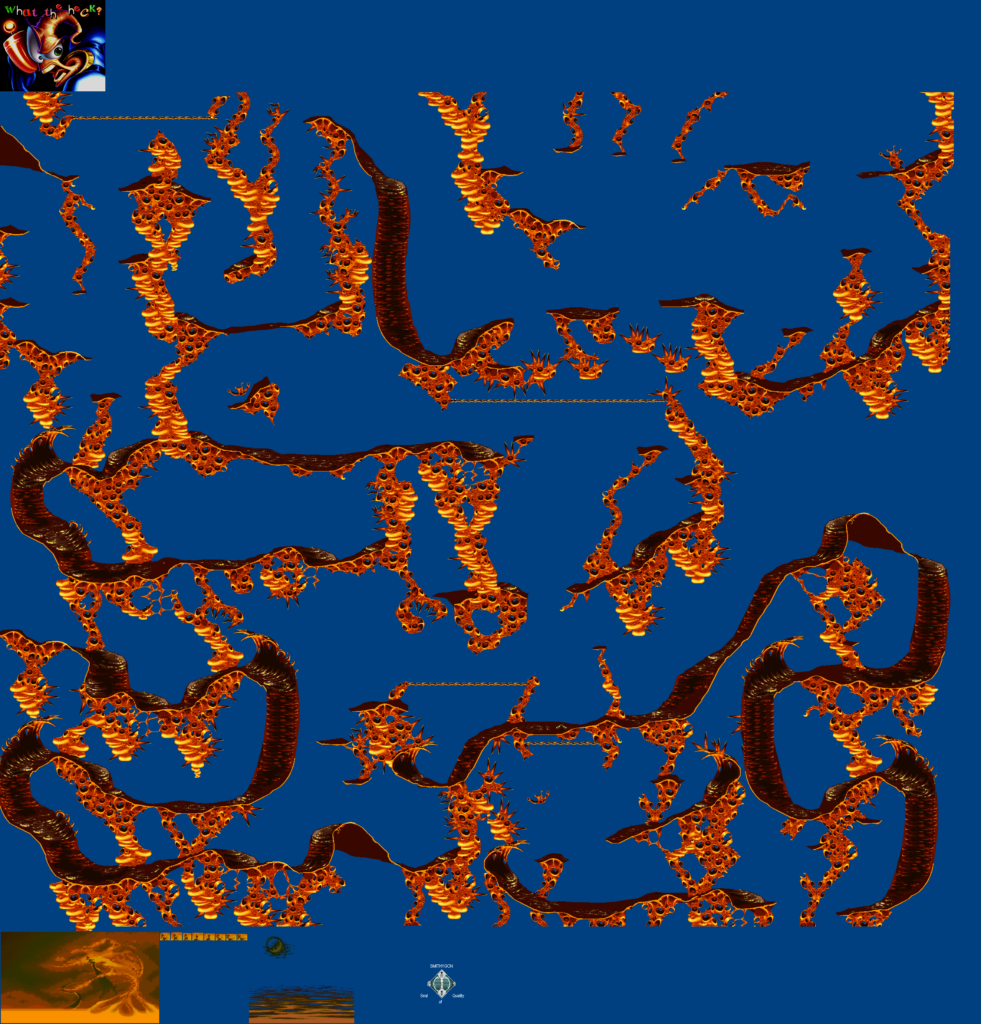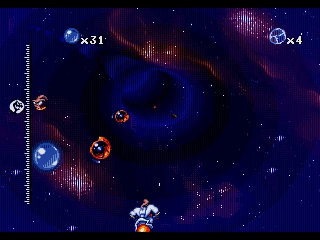
If you were to ask people to name the most iconic video game character created in the 90’s, I’m sure you would get a lot of Kirbys (Kirby’s Dream Land, 1992), Sonics (Sonic the Hedgehog, 1991). You might even get a couple Banjo and Kazooies (Banjo-Kazooie, 1998) and Pikachus (Pokémon Red and Blue, 1996). But I’m willing to bet real money that not a single person would say Earthworm Jim (Earthworm Jim, 1994). Developed by Shiny Entertainment and published by Interplay Productions for the Sega Genesis, Earthworm Jim, a 2D shoot-’em-up game platform game, was well received by critics and consumers alike: it was the first game ever to receive a 100% review in GamesMaster magazine and sold more than a million copies by 1995, just one year after its release. Earthworm Jim even had a TV show and multiple toys to cement itself as a franchise. But despite this success, the Earthworm Jim franchise has almost completely disappeared from public memory. Why did Earthworm Jim explode in popularity? What set it apart from the other 2D platformers released at the time? Complexity and comedy: Earthworm Jim was made as a satire of generic 2D platformers.
2D action platformers at the time usually consisted of left-to-right level design, possibly due to the success of the Mario games. Games like Kirby’s Dream Land and Sonic the Hedgehog followed this recipe to success and became household names in their own right. These 2D platformers all had rigid, polygonal, well-defined blocks that made up the levels. Navigation was easy, intuitive, and rarely required any real thought. Earthworm Jim’s level design was anything but intuitive. Long and twisty paths mixed with surreal obstacles and formations make navigating the worlds of Earthworm Jim a challenge. Verticality was also an important part of Earthworm Jim’s level design. The shift away from traditional left-to-right level design made the levels of Earthworm Jim feel more complete, more believable: it feels a lot more like moving through a 3D space rather than a 2D space.

To complement these complex levels, Earthworm Jim also introduced movement mechanics not commonly found in other platformers released at the time, such as using Earthworm Jim’s head to swing from hooks or as a propeller to slow the rate at which Earthworm Jim falls. Sometimes players need to execute skillful combinations of these movements to progress through levels. This makes the game a lot more difficult, especially for a younger audience. I was surprised by the overall difficulty of the game, and most of it was from navigating the levels.
So far, I’ve classified Earthworm Jim as a platformer and have discussed it solely as a platformer, but this actually doesn’t do the game justice. In between each level is a minigame called “Andy Asteroids?” which is a race in space against an enemy called Psy-crow. The minigame is actually quite easy, at least compared to the rest of the game, but losing the race results in a boss battle against Psy-crow. Another level, “Snot a Problem”, is a three round bungee-jump battle against Major Mucus: Earthworm Jim and Major Mucus bounce up and down in a bungee-jump style and attempt to knock each other into the walls and break the other’s bungee cord. This non-adherence to its own genre shows the willingness to experiment: Earthworm Jim isn’t like other platformers.

Earthworm Jim was lauded for its unique humor and zany storytelling, and when combined with its willingness to deviate from the norm, it’s quite understandable why it was so popular: it had character. Earthworm Jim himself was quite a character himself, often yelling catchphrases like “groovy!” and “oh Nelly!”. He’s also an earthworm with a gun and he can use his own head as a whip. Earthworm Jim was a funny, likable character.
If somebody wanted to play a unique platformer in the 1990s, their best bet was Earthworm Jim. The franchise built itself on the twin pillars of wackiness and abnormalness. Their experimentation and franchise personality were greatly successful and Shiny Entertainment found success. In 1995, Earthworm Jim 2 was released, and it too was successful. But then came the disastrous Earthworm Jim 3D developed by Vis Interactive. Fans complained that the zaniness of the first two games was lost on the third installment: it had lost what it meant to be Earthworm Jim. A comparatively bland storyline along with terrible camera controls made the game playable at best. It was considered a flop and effectively killed the franchise. Earthworm Jim had become exactly what it set was meant to satire: a mediocre, run-of-the-mill platformer.
